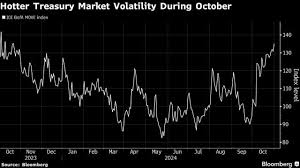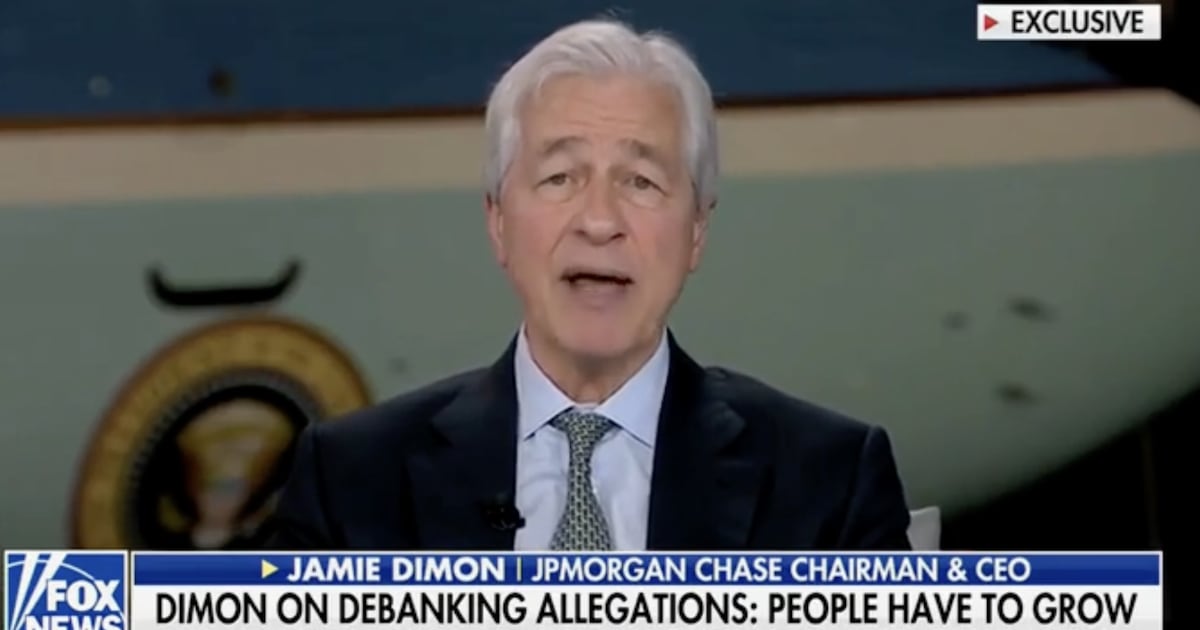ADDED BONUS FEATURE
The Market Is Fairly Upbeat. Is It the Calm Before a Storm? - The New York Times
Labor Market Sends Murky Signals Ahead of Fed’s Policy Meeting
October’s payroll growth disappointed, with only 12,000 jobs created.
Federal Reserve officials will need to determine the best path forward for monetary policy in less than a week. And yet, Friday's employment report didn't deliver any clear signals for the data-dependent central bank
The BLS noted that U.S. workers unable to work due to bad weather was a whopping 512,000 in October.
As of November 1, futures traders assigned a 98% probability to the FOMC enacting a quarter-point cut at the next Fed meeting, up from 95% a day ago, according to CME Group's FedWatch Tool. Odds of the Fed standing pat fell to 2% from 5%.
And for those keeping score at home, bets on the FOMC delivering another jumbo-sized rate cut are stuck at 0% vs 37% a month ago.
With the October jobs report now a matter of record, we turned to economists, strategists, portfolio managers and other experts for their thoughts on what the data means for markets, macroeconomics and monetary policy going forward.
Please see a selection of their commentary, sometimes edited for brevity or clarity, below.
Jobs Growth Stalls Amid Hurricanes and Strikes:
What the Experts Are Saying
A dismal October payrolls print supports the case for a slow and steady pace of rate cuts.
By Dan Burrowspublished 6 hours ago
Jobs growth was essentially unchanged last month, as disruptions from two hurricanes and the Boeing (BA) strike put a damper on hiring. Although job creation came in far below estimates, stable wage pressures and a steady unemployment rate should keep the Federal Reserve on track for a gradual pace of rate cuts, experts say.
"A gain of just 12,000 jobs doesn't carry much informative value given that the Bureau of Labor Statistics was not able to quantify the impact of Hurricanes Milton and Helene, which had a broad geographic impact. Additionally, the Bureau of Labor Statistics collected data over an unusually short period of time compared with previous surveys, just 10 days in mid-October. This resulted in a survey sample size that was well below average. The Fed is liable to look at this report and shrug. There is too much noise to cause them to alter their path, which includes at least one rate cut before year-end." – Timothy Ellis, research analyst at Girard, a Univest Wealth Division
"The jobs report was one of the first U.S. economic releases in a while to come in worse than expected. However, bad weather and large labor strikes muddy the water and make labor market weakness appear worse than it truly is. Still, the Fed's job is to see through the noise and they will probably take some signal from the continuing labor market softening as a sign that they can continue the process of monetary normalization without much fear of igniting another bout of inflation." – Scott Anderson, chief U.S. economist at BMO Capital Markets
We don't take much from the downside surprise in October's jobs report. Around 500,000 people could not go to work in-person due to weather; response rates regardless of location were low; and strike disruptions played a meaningful role. Large revisions – as we saw today for the August and September reports – remain likely. Taking a step back: overall it is clear that the labor market has normalized. Leading indicators of the labor market, such as weekly hours and the quits rate, have been moving towards long-term averages. As far as the Fed is concerned, the jobs report is a green light to cut 25 basis points, as the Fed penciled in for its last statement of economic projections." – Lauren Goodwin, economist and chief market strategist at New York Life Investments
"We should be careful to read too much into this jobs number with severe storms and geopolitical uncertainty. Last month was really strong. This month was weak. That is the reality of high frequency data. This jobs number was disappointing. The weak non-farm payroll growth follows hurricanes and election concerns. Investors should stay focused on the macro backdrop. Economic growth and corporate earnings continue to deliver. This is a mid-cycle expansion: corporate investment and a strong consumer. Financial markets dropped in July over a single bad jobs number. That was a head fake. Things are good and that is what investors should focus on." – Scott Helfstein at Global X
"This report showed the lowest pre-election unemployment rate in a quarter decade at 4.1%. Including this month's growth, excellent data from the September jobs report and International Monetary Fund forecasts build the case for a strong economic outlook compared to other wealthy economies. It also builds confidence that the Fed will look to cut interest rates again shortly following the election based on data-driven evidence that inflation is well-contained, decided completely separately of political pressures." – Eric Roberts, executive director and CEO USA at Fiera Capital
"The October jobs report showed a dismal gain of only 12,000 jobs, falling well below expectations. Additionally, hiring data for August and September was revised down by over 100,000 bringing the average monthly job gain in the last three months down to 104,000. While monthly numbers have been volatile, the overall trend shows that job gains are slowing down. Hence, the Federal Reserve is expected to reduce the federal funds rate by a total of 50 basis points by the end of the year." – Dawit Kebede, senior economist at America's Credit Unions
"We knew the October data would be distorted by hurricanes and strikes, but what catches my eye are the revisions. For anyone who needed a reminder, the 112,000 fewer jobs added between August and September show that the labor market is slowing, even if it isn't crumbling. The household survey also arguably offered a cleaner look at dynamics in October, and that those dynamics suggest some softness. The Fed's shift in focus towards bolstering the labor market is being validated here. Inflation has made a lot of progress, and the latest data hasn't delivered any meaningful surprises to shake that confidence. We continue to expect the Fed to deliver 25 bps cuts at each of the coming meetings. Skipping one before year-end could put them behind the curve again." – Elyse Ausenbaugh, head of investment strategy at J.P. Morgan Wealth Management
"We can quantify the impact of the strike, some 44,000 jobs, but the BLS indicated it could not quantify the impact of Hurricanes Helene and Milton. What we got was a headline job growth number of only 12,000 and a stable jobless rate. The bigger issue which is leading to lower bond yields and higher stock prices are the downward revisions to previous month's reports, which will all but assure a 25 basis point cut next week and alleviate some concern around the possibility of no cut." – Steve Wyett, chief investment strategist at BOK Financial
"Despite the sure fright from a muted headline number, unemployment remains low, and wages continue to outpace inflation, providing affirmation that the labor market is cooling, but not at an alarming cadence. The Federal Reserve is likely to err on the side of caution and reduce interest rates by another 25 bps in November given the difficulties of accurately interpreting incoming labor market data." – Noah Yosif, chief economist at the American Staffing Association
"Perhaps more important than October's muddled data are the revisions to prior months. While not huge, these revisions could be important directionally because they show that employment hadn't been strengthening as much as previously reported. Combined with a weaker October (even if we assumed perhaps an additional 100,000 to reflect the impact of strikes and hurricanes), the current trajectory of employment is consistent with continued Fed easing. Today's data make it even more likely that the Fed will cut rates by 0.25% at both its meeting next week and again in December." – David Royal, chief financial and investment officer at Thrivent
"There was all kinds of noise in this report with the hurricanes and strikes, but it keeps rate cuts on the table. August and September job growth was revised sharply lower, which helps remove some fears about an overheating economy. Yields may have peaked at the same time wage growth remains healthy. Goldilocks remains in effect." – David Russell, global head of market strategy at TradeStation
"October job growth was sharply lower relative to September and consensus expectations. However, lower growth was expected to a degree given election uncertainty, recent labor strikes and hurricanes. The labor market has already begun recovery from the two latter effects. Despite lower growth, the unemployment rate remained steady, and early reactions seem to not be impacting expectations that the Fed will proceed with another 25 bps rate cut in November." – Ben Vaske, senior investment strategist at Orion Portfolio Solutions
"The bottom line? The October jobs report was softer than expected, but not terribly concerning given the one-two punch of the Boeing strike and hurricanes Helene and Milton. Other labor market data remains relatively solid, likely setting payrolls up for a strong rebound in November. Despite the volatility in the payroll numbers, the economy remains on a solid footing. Growth remains above trend, labor conditions continue to normalize, and the disinflationary trend remains intact. The Fed still appears to be set up to cut by another quarter point as expected next week and reaffirm prior guidance for further cuts ahead, subject to continued progress toward the central bank’s dual price stability/full employment mandate." – Jim Baird, chief investment officer at Plante Moran Financial Advisors
"October job growth was sharply lower relative to September and consensus expectations" One firm conclusion is that August and September numbers were revised down, so the job market was marginally weaker than previously believed. This will be a relief to the FOMC, which must have been worried that September's big cut was a mistake. Our view is that the direction of rates is still down from here. We have added duration during the recent bond market sell-off and are more likely to add from here." – Brad Conger, chief investment officer at Hirtle Callaghan & Co.
"While the Fed will likely attribute some of the weakness in today's data to one-off factors, the softness in today's data argues for the Fed to continue its easing cycle at next week's meeting. Stormy numbers but sky clearing for a quarter-point cut." – Lindsay Rosner, head of multi-sector fixed income at Goldman Sachs Asset Management



.png)







No comments:
Post a Comment